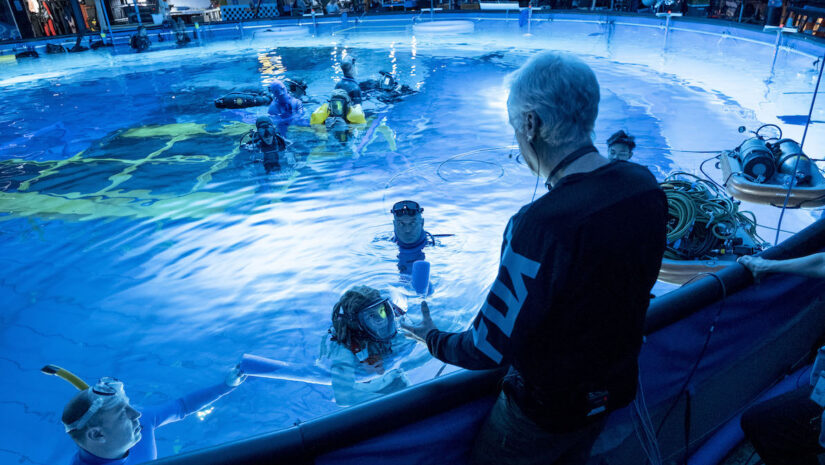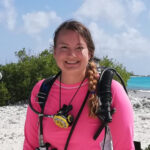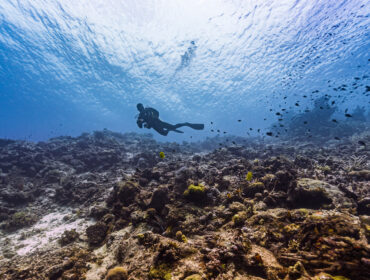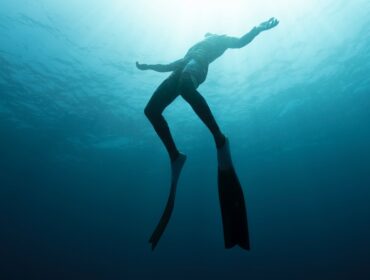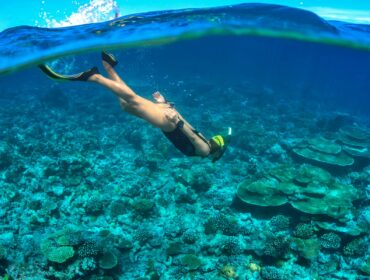The sequel to James Cameron’s 2009 hit, “Avatar: The Way of Water,” has grossed over $2 billion in just over a month of being in theaters. The new “Avatar” movie features many scenes that were filmed underwater using cutting-edge technology. Director James Cameron has revolutionized the future of underwater filmmaking with his innovative approach and use of new technology. He was able to achieve this with the help of John Garvin, the master diver on-site who helped execute the complex underwater scenes in the film.
I spoke with John Garvin about his involvement in the new movie, and he shared his unique insights and experiences from the groundbreaking production.
Who is John Garvin?
Over the course of four years of filming “Avatar: The Way of Water,” a total of 200,000 dives were made, providing a wealth of material to talk about. But before we get into the movie, we like to get to know John Garvin a little better.
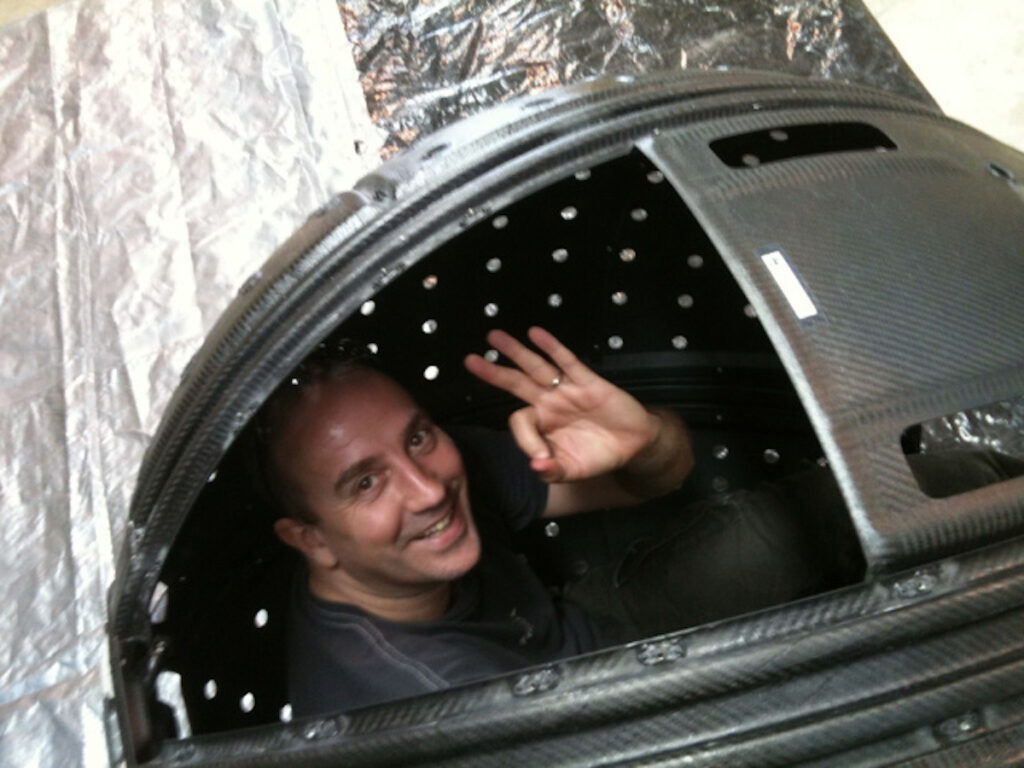
John Garvin, who grew up in the South of England in Cornwall, was interested in diving after watching the 1989 film “The Abyss” by James Cameron. It wasn’t until Garvin went to university, though, that he got into diving. He started his training with the British Sub-Aqua Club (BSAC).
“It wasn’t until I was at university, when I blew my entire grant check that was meant to be for my accommodation. I blew the whole thing on second-hand scuba diving equipment,” Gavin said.
He also spent most of his weekends exploring the chilly and challenging waters of England and mainland Europe. For a while, he worked as a technical dive instructor in the UK. Later, Garvin decided to take a scuba diving holiday in the Turks and Caicos and was immediately fascinated by its incredible underwater wall system.
Opening a Dive Shop
During this holiday, he noticed there was an opportunity for him to open a scuba diving business that would focus on technical diving. He opened his dive shop “O2 Technical Diving” and quickly made a name for himself training Closed Circuit Rebreather divers and Trimix divers.
During Garvin’s time in the Turks & Caicos, he was also involved with freediver Tanya Streeter’s world record event in 2002. Streeter was attempting to become the deepest freediving female in the world. Garvin was one of the divers in charge of her safety at the deepest portion of the dive, together with a team of ten safety divers spread out at different depths of the dive. Tanya went to a depth of 524 feet and still is the world record holder today.
“Following the success of the world record event, I realized that despite the stress of the actual event it actually really resonated with me. I enjoyed the complex planning and seeing it come to a successful conclusion,” Garvin said.
Among his students were also underwater filmmakers, including a camera man for Blue Planet. Slowly, the film industry was finding John Garvin.
Working in the Film Industry as a Master Diver
Garvin moved on to work in the film industry as a master diver. He was involved in the feature film “Sanctum” as a writer and trainer for the actors. The movie, about exploring an underwater cave in Papua New Guinea, marked his first collaboration with James Cameron, who was the executive producer. Garvin trained actors to use Closed Circuit Rebreathers and dive in an underwater cave system in a short time frame.
The movie was filmed both in an underwater tank and a real cave system, and the actors successfully performed most of the stunts themselves. This collaboration paved the way for Garvin to continue working with James Cameron on future projects, including the “Deepsea Challenge” where they built a submarine to reach the deepest point in the ocean, the Mariana Trench. And, of course the most recent film, “Avatar: The Way of Water.”
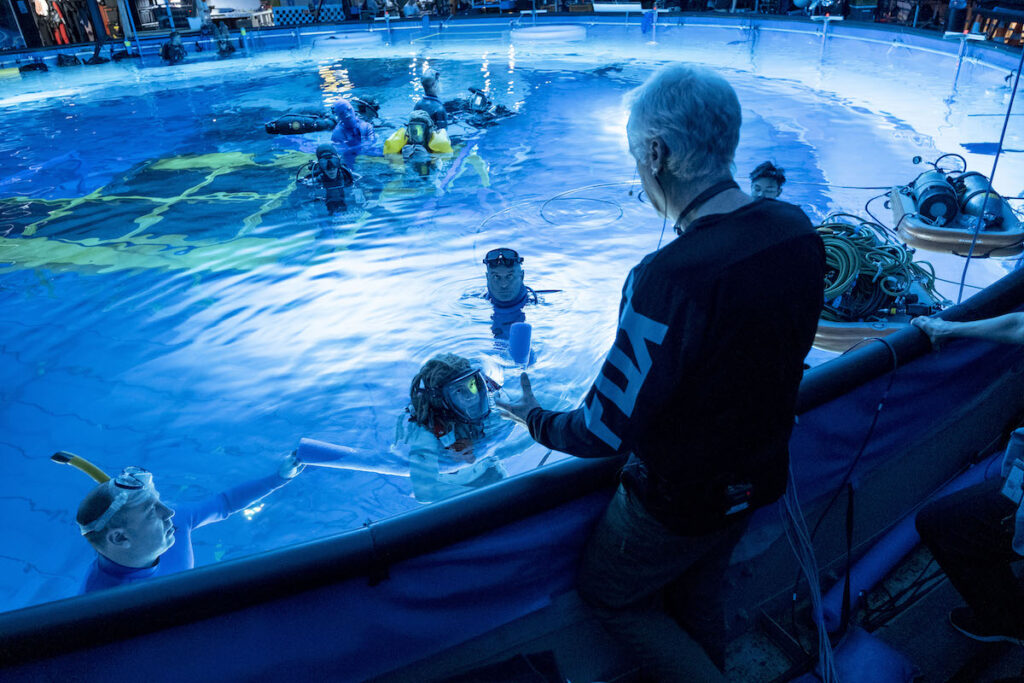
Diving on the Set of “Avatar: The Way of Water”
It took a total of four years to film all the scenes for “Avatar: The Way of Water.” Two years were spent filming in Los Angeles where the motion capture portion was filmed. This was followed by two years in New Zealand where the live action was shot.
Since it is difficult to replicate the movement of water around an actor, it was decided that all the underwater scenes had to be filmed underwater. This is where John Garvin came in. He helped advise the creative team on how best to tackle the challenges involved with underwater filming.
“It’s basically run as a commercial dive operation, and I’m a commercial diving supervisor. We follow all the guidelines and safety protocols carefully,” Garvin said.
Training Actors in Scuba Diving
Some of the actors in the movie had never done any scuba diving. So, the very first portion of working with the actors was getting them comfortable underwater while on regular scuba diving equipment.
Garvin trained Sigourney Weaver how to dive, as well as Britain Dalton, Bailey Bass, and Jack Champion, in Hawaii. The goal was to get all the actors as comfortable as possible underwater so they look relaxed when filming. This was especially important for the actors that are part of the Metkayina clan — the water people of Pandora.
Filming Motion Capture Underwater
The first tank that was used in Los Angeles was about 60 feet in diameter and 20 feet in depth. This tank was used for the first full year to figure out how to shoot “Avatar.” One of the biggest challenges the production team came across was how to film motion capture shots underwater.
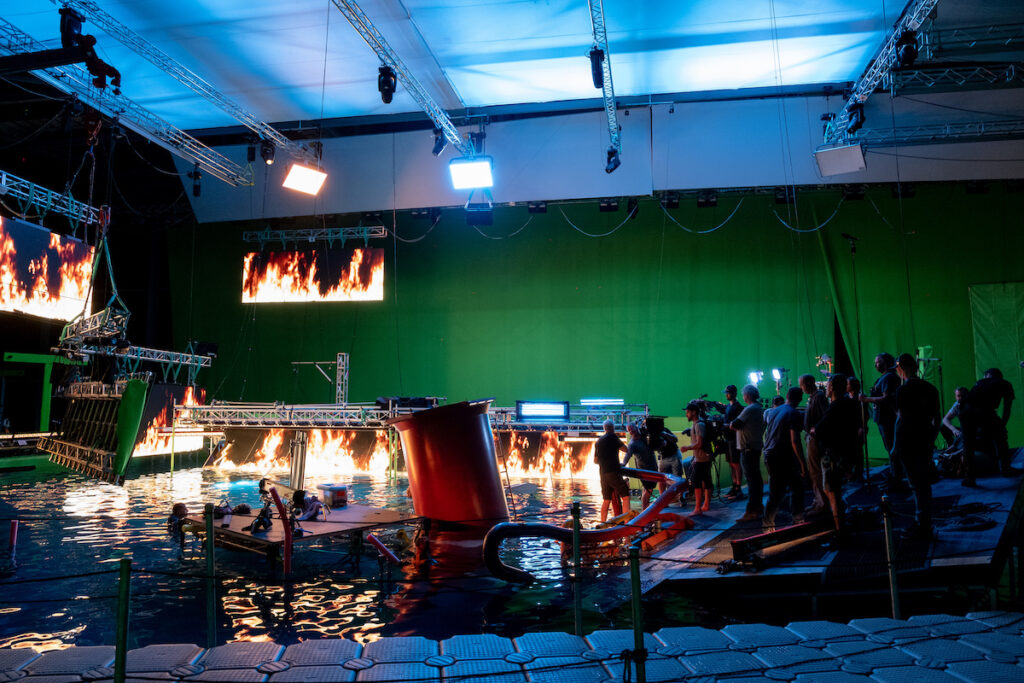
Motion capture is a technique used to record the movement of objects or people and then translate that movement onto a digital model in real-time (or later) for animation or special effects. In this case, the cameras would record the dots that were placed on the wetsuits. They figured out during the filming that using ultraviolet cameras instead of infrared cameras allowed them to get good motion capture at depth.
However, when divers would exhale, the cameras would pick up on their bubbles as dots. The only solution to this problem was simply to not have any bubbles. This created the next challenge: breath holding.
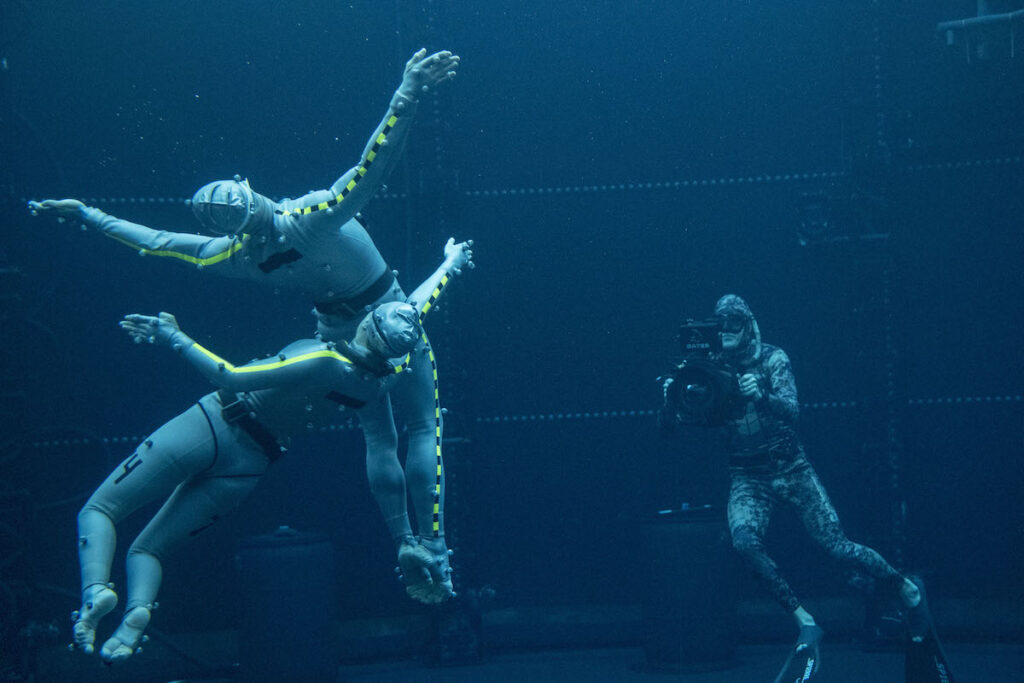
Introducing Freediving on Set
To tackle the bubble issue that confused the motion capture cameras, freediving coach Kirk Krack was brought on board. He trained the actors and crew in technical freediving, so that they could successfully hold their breath long enough for the scenes to be filmed.
The freediving training took place over several months to slowly build up the actor’s dive times and confidence. Many actors had only just learned how to scuba dive. This included the “golden rule” to never hold your breath. Now, they were told to hold their breath all the time. As you can imagine, it was a challenging learning curve.
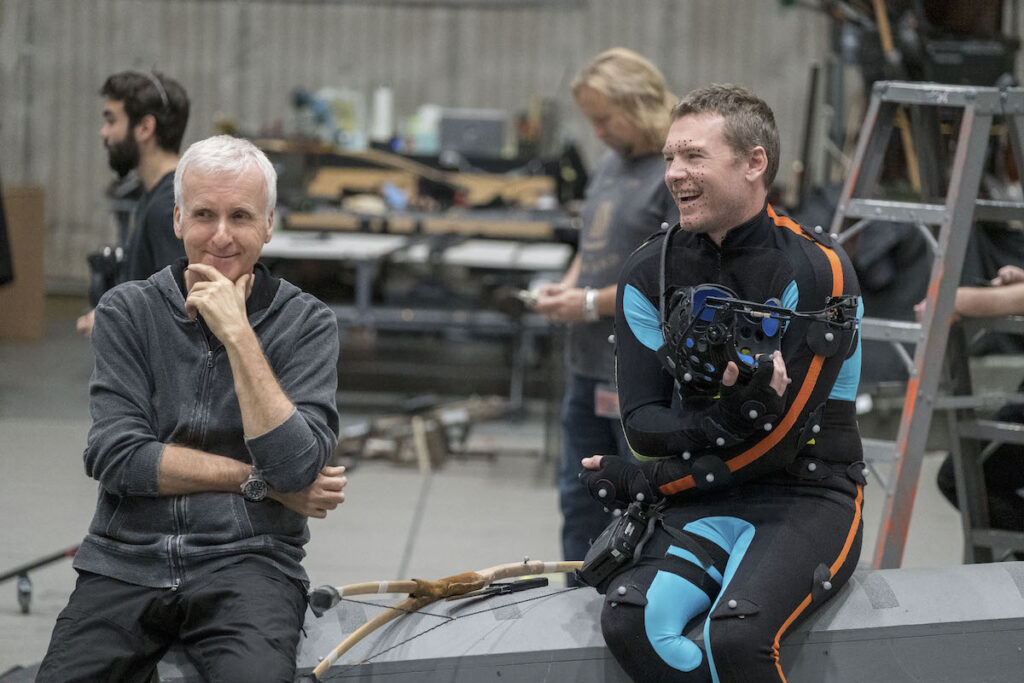
“James Cameron wanted a relaxed performance and asked us for a two-minute working breath-hold. We were not just able to give him that, but also succeed that breath-hold,” Garvin said.
In fact, Kate Winslet set a record of holding her breath for an impressive seven minutes and 14 seconds. By doing this, she beat Tom Cruise’s record of six minutes. Sigourney Weaver also set an impressive personal record by holding her breath for six and a half minutes. To set these impressive records, 50 percent and 80 percent nitrox was used.
It’s important to note that technical freediving is a specialized skill and should not be attempted without correct training and professional supervision.
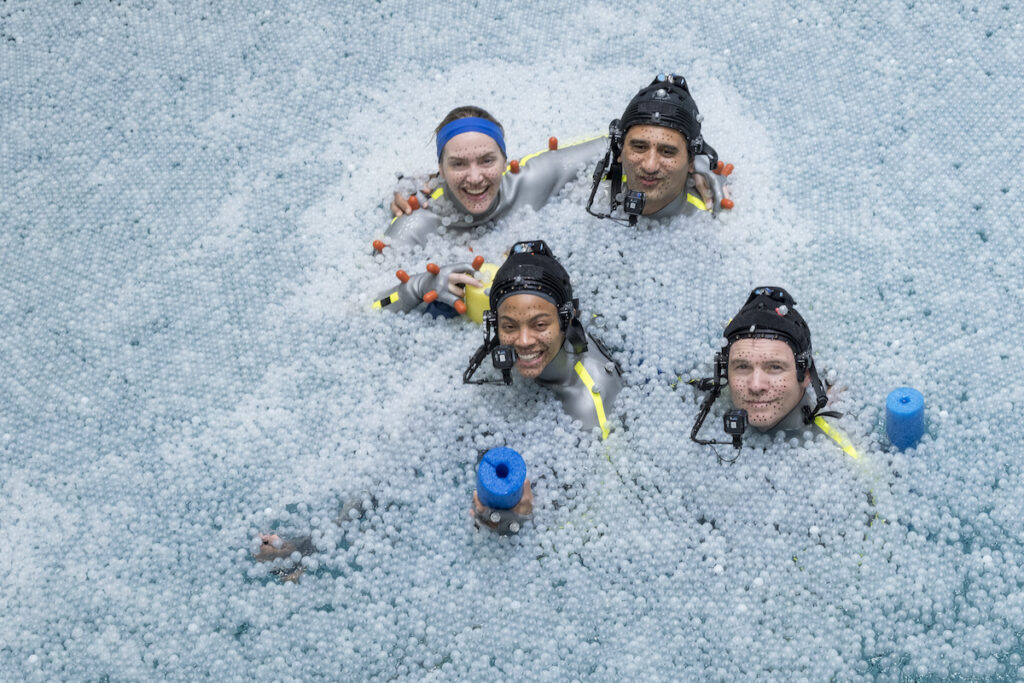
Filming at the Water Line
One of the other challenges they encountered was while filming just below the waterline. As the actors approached the surface, the surface would act like a mirror, reflecting the dots on the wetsuit and causing confusion for the cameras. To combat this, the team introduced hundreds of thousands of small white balls on the water’s surface. This created a barrier that eliminated reflections while still allowing the actors to come up for air.
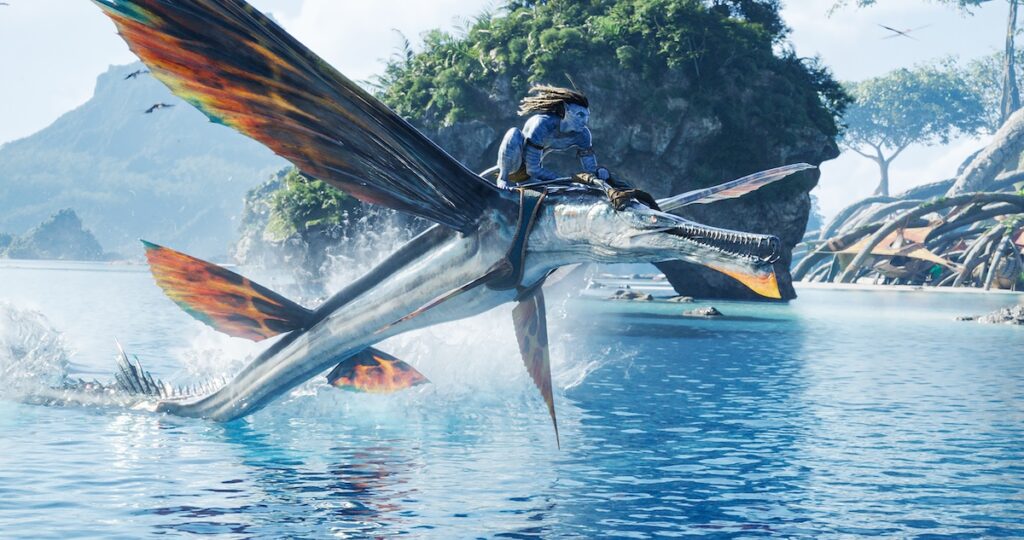
Creating Movement Underwater
In the movie, there are several scenes where actors ride an Ilu — a type of underwater creature — at high speeds. To create a realistic and believable effect, Cameron decided to film these scenes underwater. He was concerned that if they attempted to film them as “dry-for-wet” scenes, audiences would detect something was amiss and be distracted from the story. To achieve the necessary sense of movement and speed, the Avatar crew installed two tugboat propellers in the filming tank. This created a water turbine that spun counter-clockwise at speeds of up to nine knots.
Keeping the Actors Comfortable in the Water
The water temperature in the water tanks was around 86F and the actors were wearing freediving wetsuits with a thickness of about 1.5mm to 2mm. There were also warm water hoses used to heat up the actors if they got cold.
“On some of the busy tank shoot days, we would be in the water for sometimes 13/14 hours,” Garvin explained.
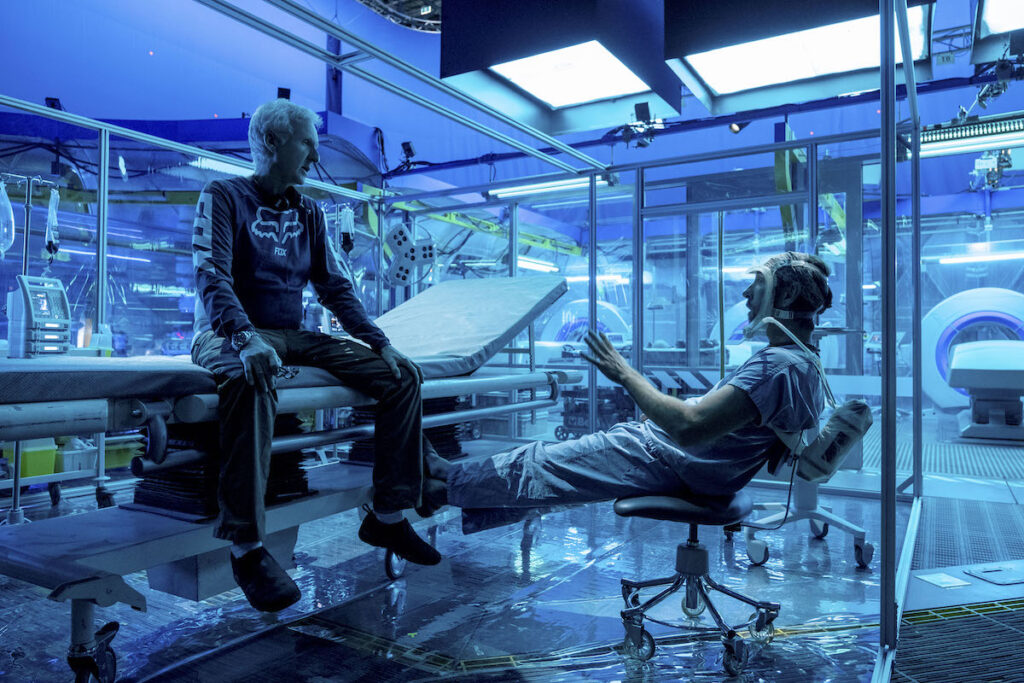
They learned that the best method was to film for 4 to 5 days in the tanks, and then have a dry week. This way, the actors could recover and get ready again for filming, while the crew could prepare the water tanks for the next scenes that would be filmed.
Final Thoughts
Over the course of four years, John Garvin and the crew of “Avatar” faced a variety of challenges while creating the incredible underwater scenes in the world of Pandora for the movie “Avatar: The Way of Water.” Through collaboration with industry experts, they have certainly changed the future of underwater filming.
“Avatar: The Way of Water” is currently available to watch in theaters, including 4D.
Written by Rianne Poesse

